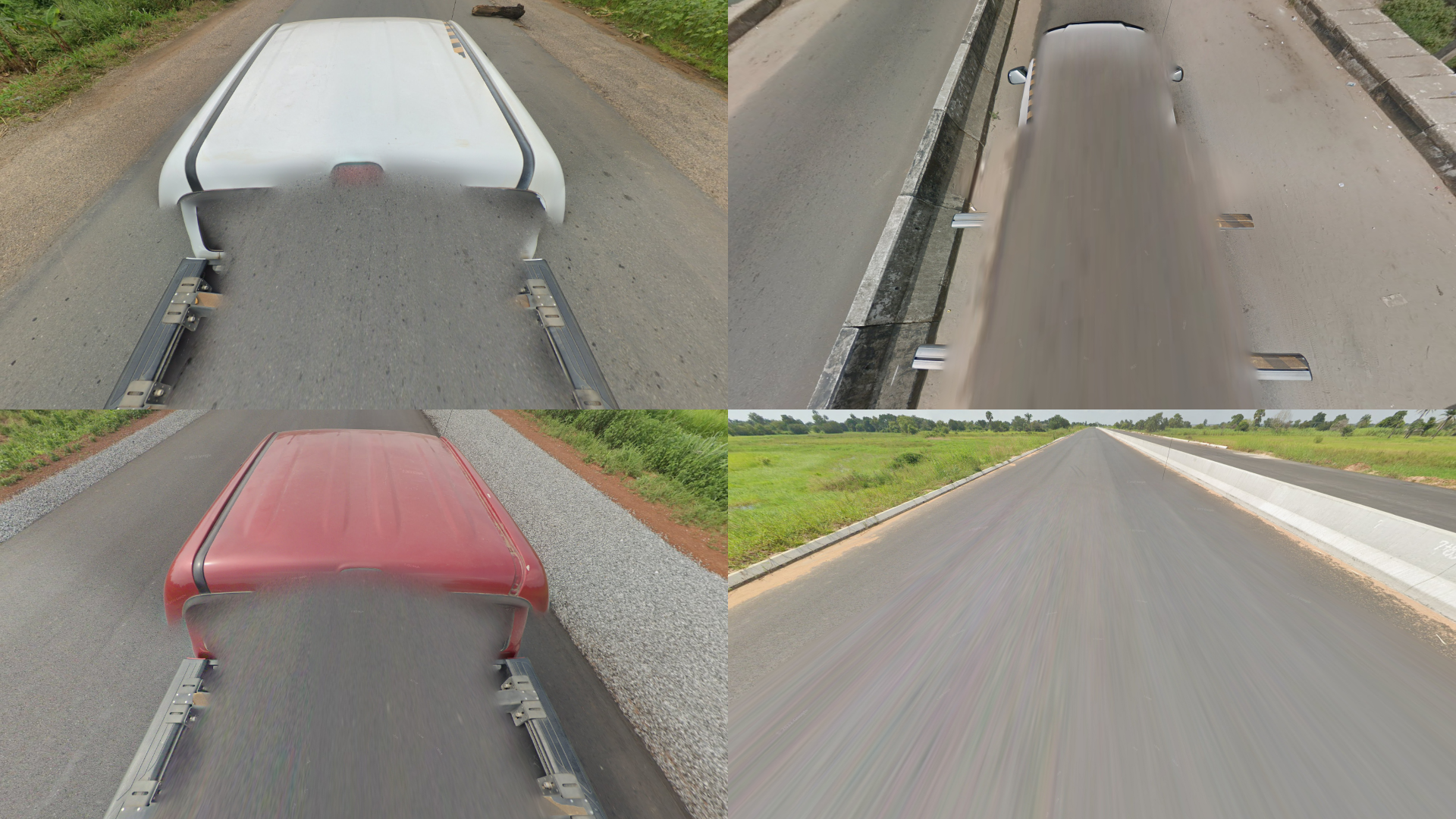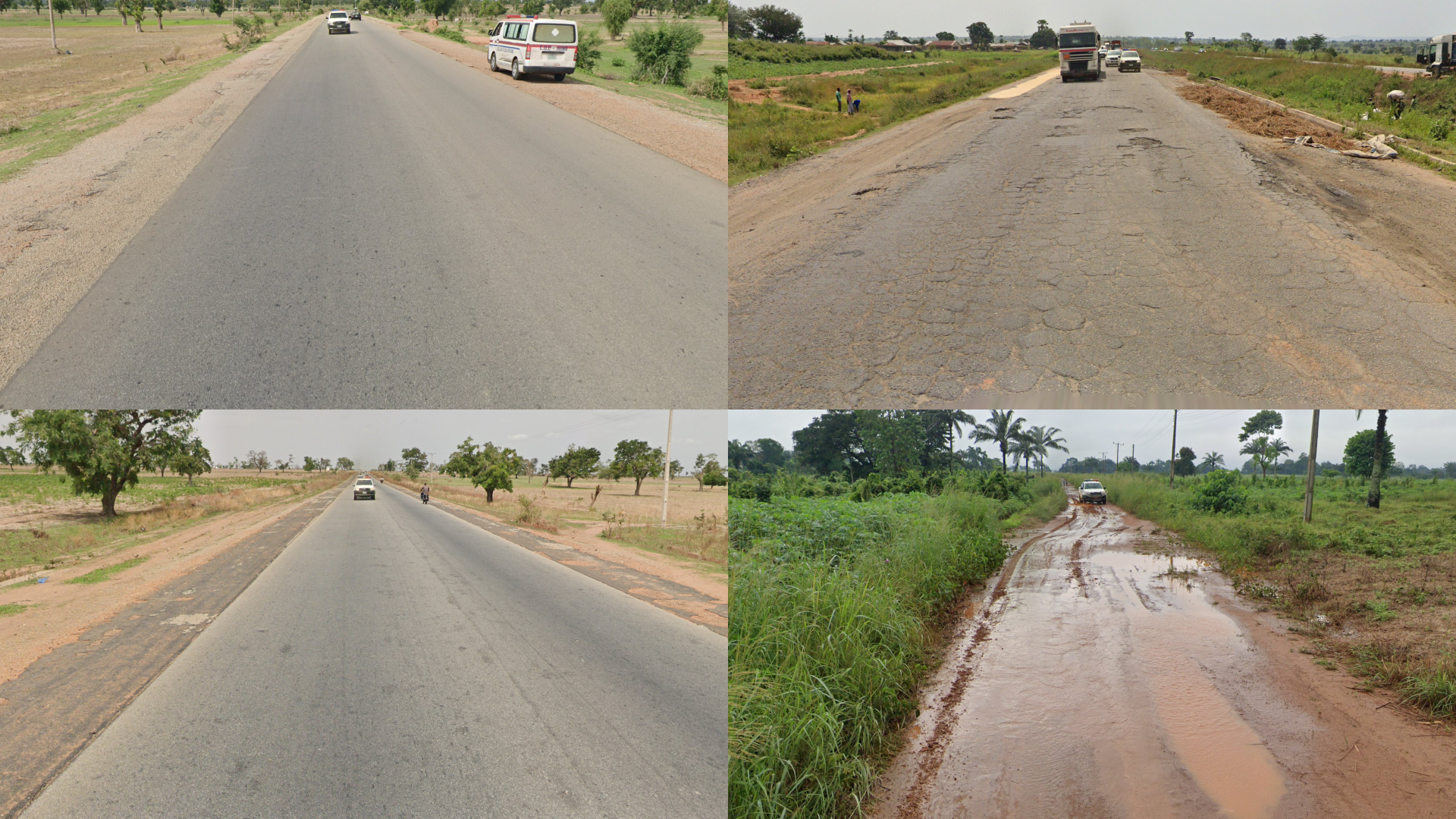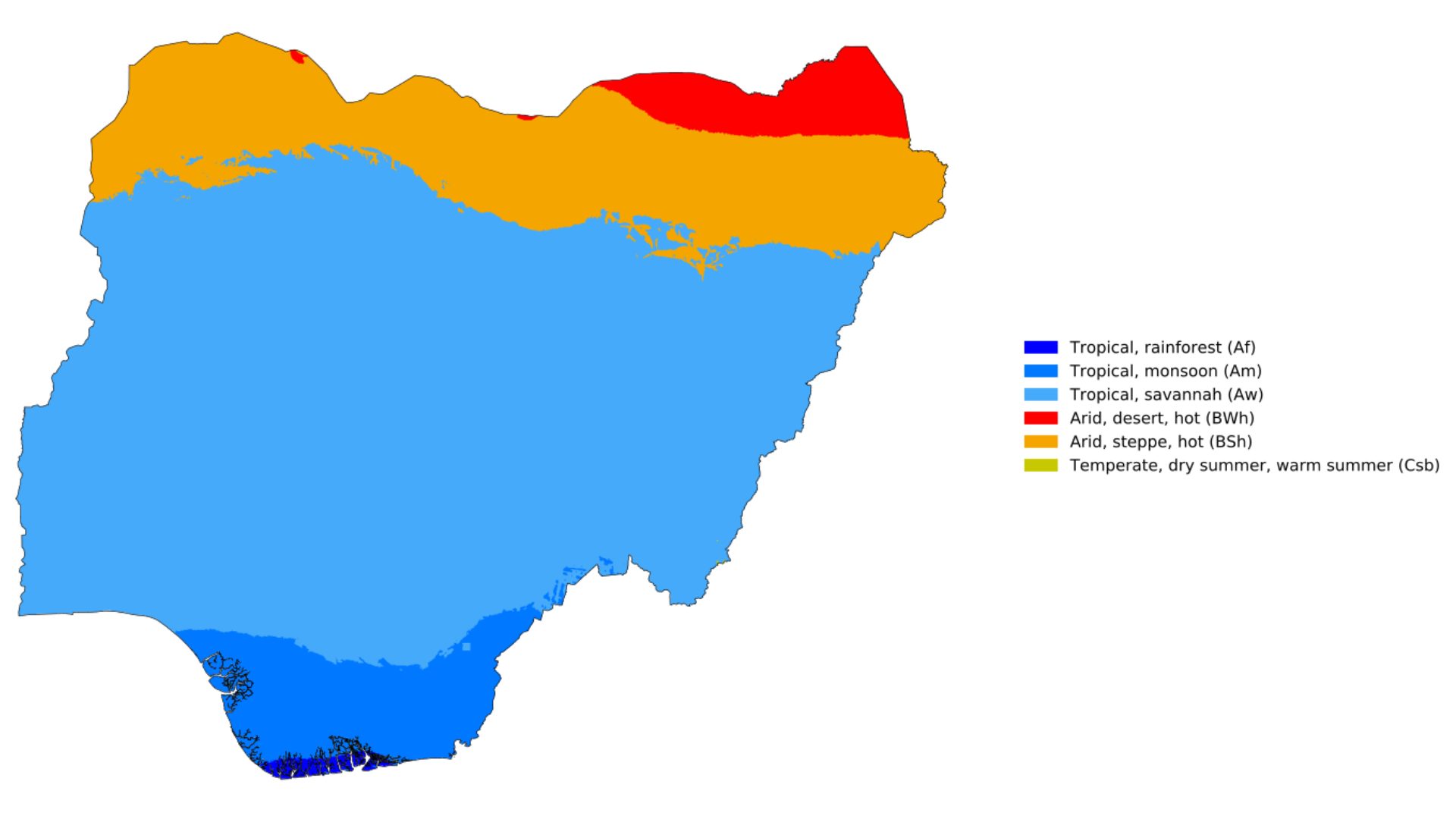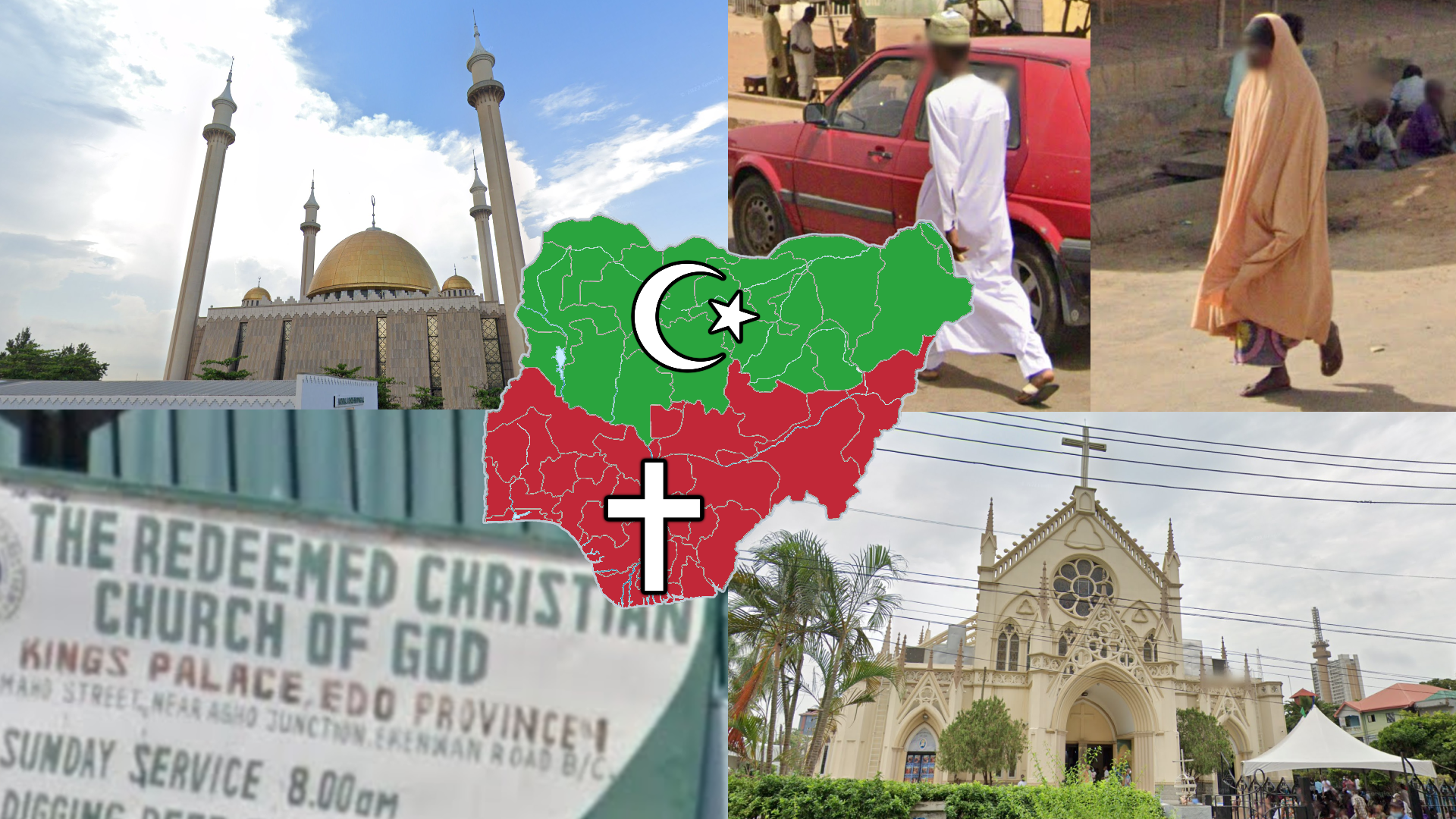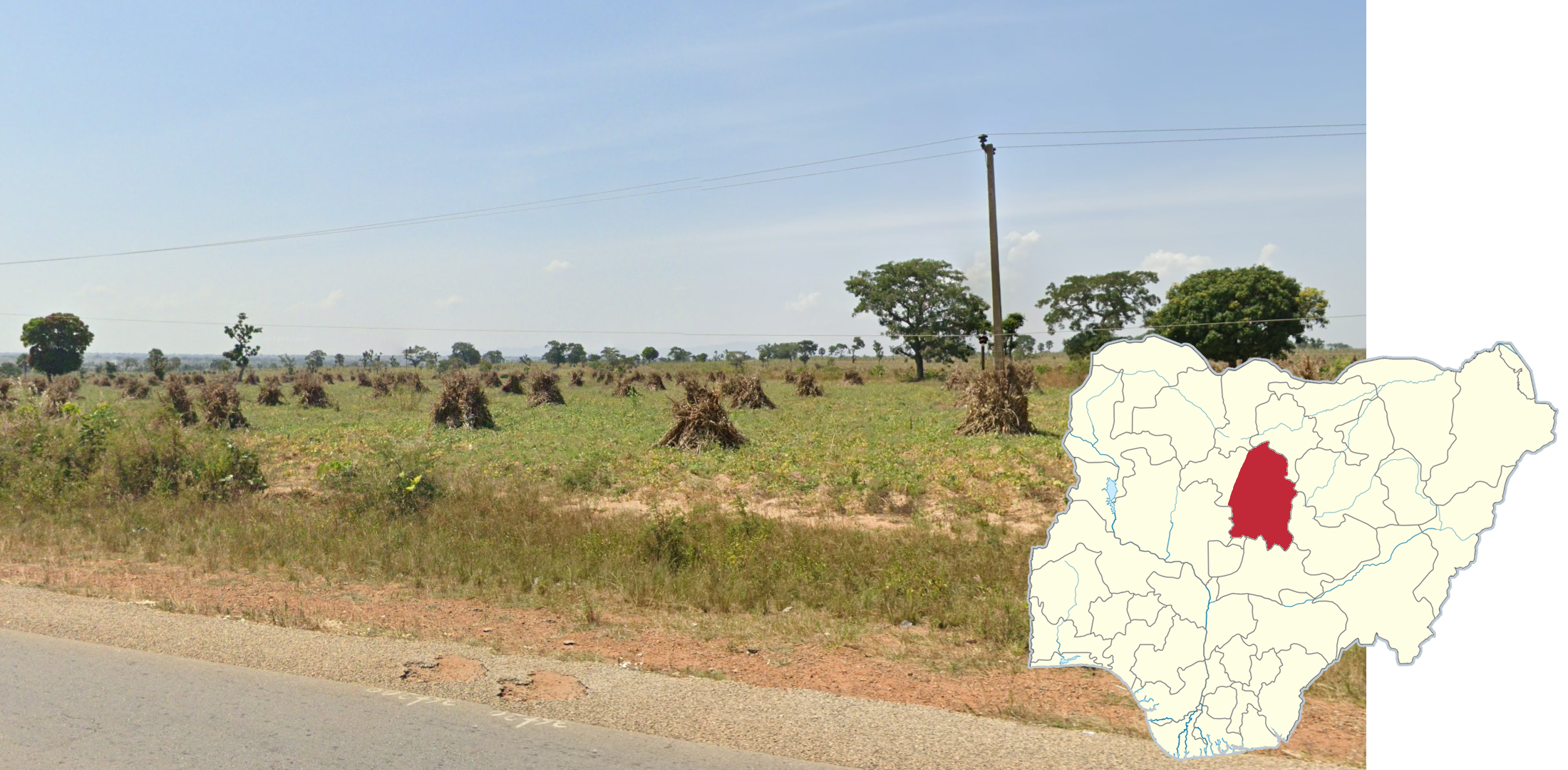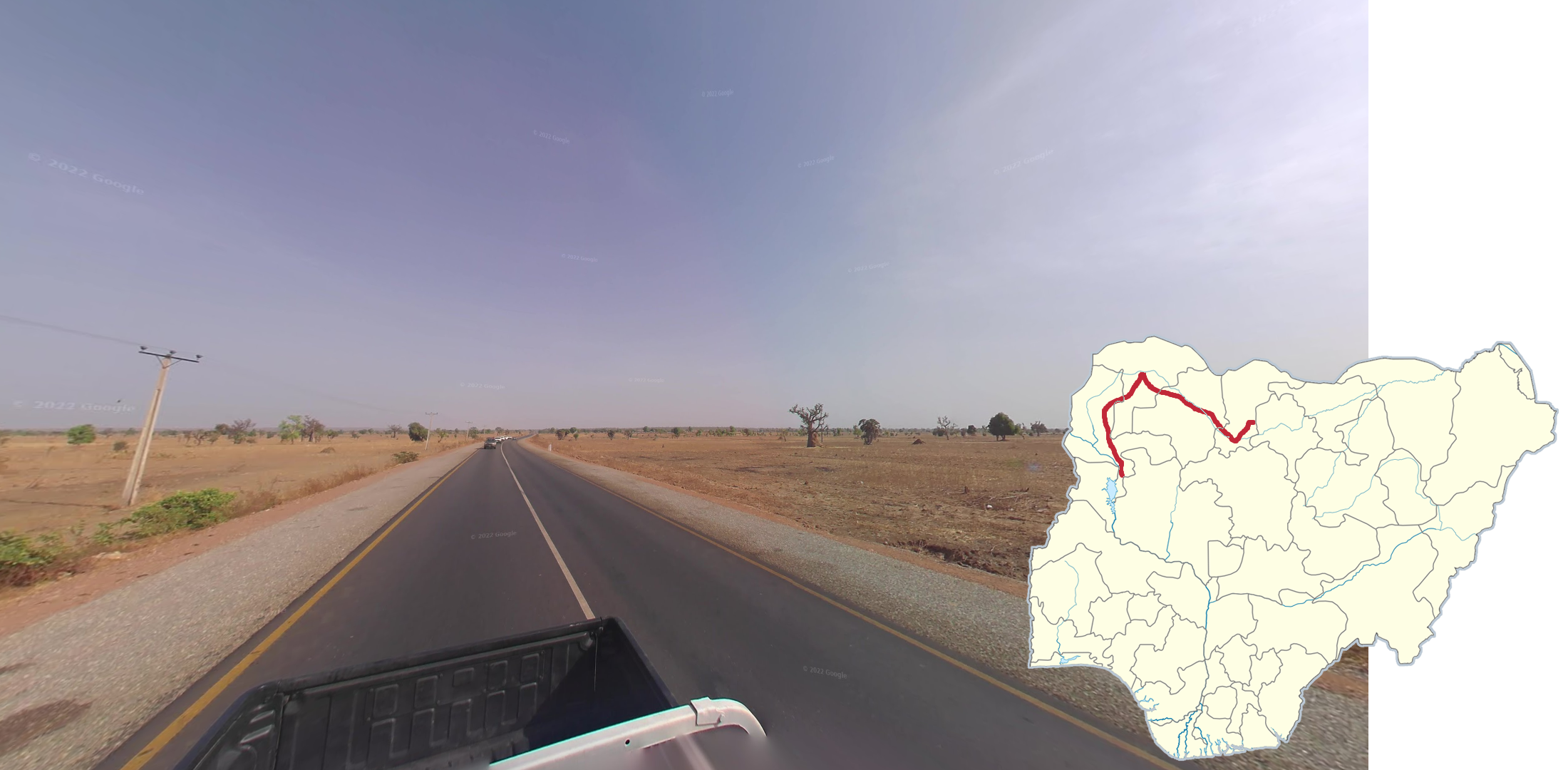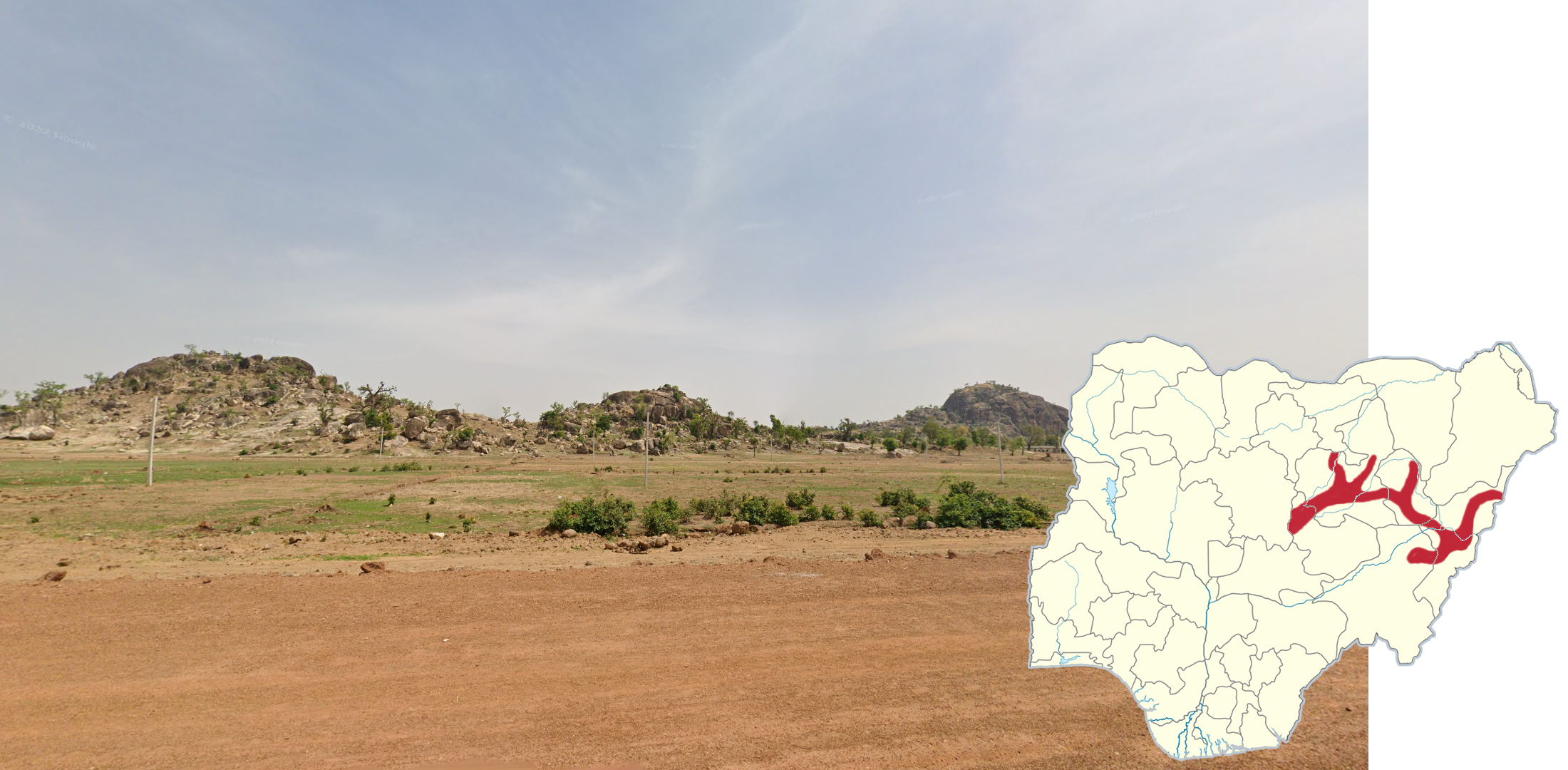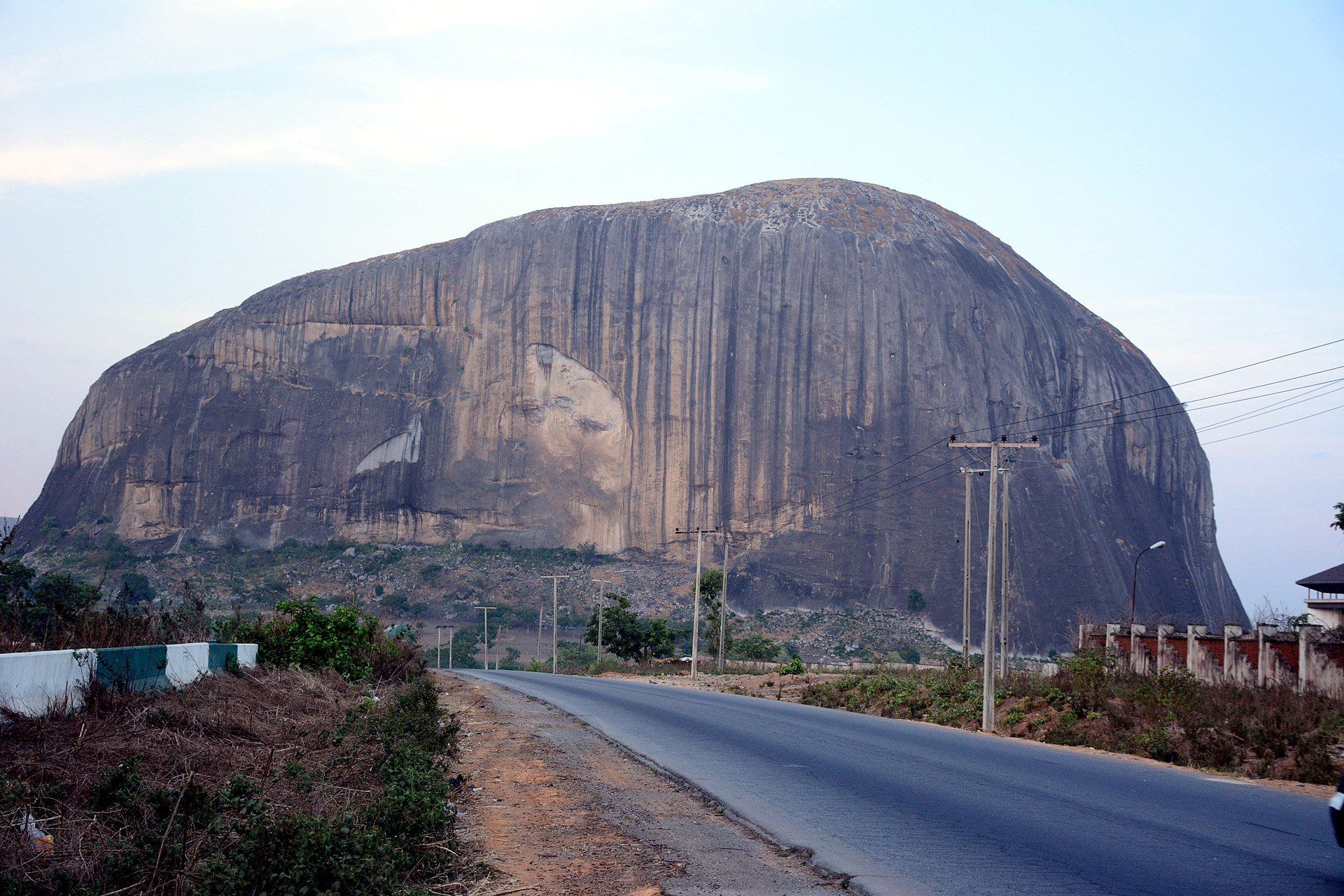
Nigeria
Nigeria is generally a fairly flat country with subtle elevation changes throughout. The south is relatively flat apart from some noticeable hills in the southeast, in Enugu state and in the southwest, between Ife and Lokoja. In the north, more prominent hills and mountains are found from Abuja and Jimeta. The largest mountains are found in the east, making up the Mandara mountain range and the Nigeria-Cameroon border. However, due to little coverage, the mountains are rarely visible.
Shown is a Köppen climate map of Nigeria. The climate ranges from tropical rainforest in the far south, where you can find an abundance of palms with lush, green vegetation, to a more arid, savannah landscape in the centre, with more scattered trees. In the far north, it transitions to an arid steppe where the vegetation becomes even more sparse.
NOTE: Due to dry/wet seasons, the coverage may look drastically greener/drier than expected for certain latitudes.
The maps above show where Gen 3 and 4 can be found. Knowing where you can find each very useful. Notably, Generation 3 is not found north of Abuja, Generation 4 is not found in the northwest or far south. Shitcam is now found in most of Nigeria.
You can click on each of the images to enlarge them.
This map shows states with unique vehicle and tuk tuk colours. If a vehicle is shown, the state will have yellow tuk tuks.
NOTE: There may be some rare exceptions to what is shown in the image. Paint jobs in-game may also differ slightly to those shown in the image.
You can click on the image to enlarge it.
Benue state can be recognized by the lush, green grass covered ground, with reddish soil. The vegetation is somewhat scattered, with the grass making way for taller trees. Shorter trees and shrubs between the grass and taller trees are somewhat uncommon. Thatched huts are also common in comparison to other southern states.
NOTE: An abundance of palms should make you lean toward the bordering southern states that can look similar.
The highways that run through the northwestern states of Kebbi, Sokoto, Zamfara, and Katsina can be recognized by an even more open and arid landscape compared to Niger state. The tree coverage becomes even more sparse, or there may not be trees at all. These states are entirely covered by shitcam.
A savannah landscape combined with rocky hills can most commonly be seen in the northeast in the states of Plateau, Bauchi, Gombe, Adamawa, and the north of Taraba. The hills in the far east and west of this region are typically greener and covered in more vegetation compared to the hills toward the middle of the range.
NOTE: Around the city of Gombe, hills composed of softer, clay-like soil can be seen instead.
A flat landscape with coastal vegetation and many palms can be seen east of Lekki. The ground is very sandy. Almost all of the coverage is old Generation 3, with a silver follow car.
The A121 can be recognized by the lush, tropical vegetation surrounding the divided highway, with a short, concrete median. Being a major highway, many vehicles, especially trucks, can be seen along it.
NOTE: The A232 heading east of Benin City is also divided, however the median is noticeably wider than that of the A121.
A dry, hazy, and somewhat gloomy landscape in Generation 3 combined with sizable mountains in the distance can be found on the road heading north of Takum to Jalingo. This smudge, which gets darker further north, is also seen at the front of the camera.
NOTE: The coverage is broken on many parts of the road, so knowing where coverage exists can be helpful. You can view where the coverage is on this site.
This map shows where each old Generation 3 follow car can be found. They are uncommon, but can still be useful to know.
NOTE: The A121 is not shown on the map as it is recognizable from other clues. This silver Lexus, not shown on the map, can rarely be seen on the highway between Onitsha and Enugu.
GeoGuessr’s own official maps are not very good, for a variety of reasons. Plonk It recommends the following maps instead:
IntersectionGuessr - Nigeria (map link) - Arbitrarily generated locations at intersections, and therefore potentially pinpointable (but this is not guaranteed).
AI Generated Nigeria (map link) - A balanced map of Nigeria with over 70,000 locations with a good mix of camera generations.
In addition, here are some resources to help you practise Nigeria:
Nigeria States Quiz (quiz link) - A quiz to help you learn the different Nigerian states.


